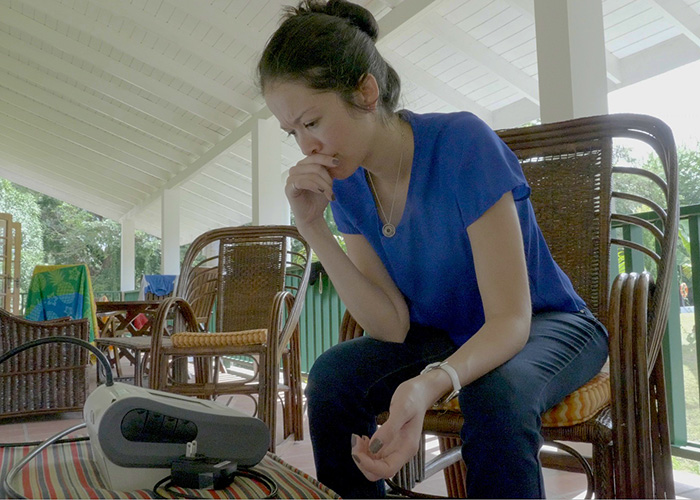A new U of T Engineering study has measured significant concentrations of traffic-related air pollution near major roadways in Trinidad, reaching levels comparable to highways in Toronto and Detroit.
This is the first study of local emissions conducted on the two islands of Trinidad and Tobago, which was led by Kerolyn Shairsingh (ChemE 0T8, PhD 1T8) under the supervision of Professor Greg Evans (ChemE, ISTEP). The team focused primarily on the airborne pollutant black carbon — also known as soot — which has been linked to negative health outcomes including lung conditions and cancer. Their findings were recently published in the journal Science of the Total Environment.
Shairsingh, who is from Trinidad and Tobago, said she was motivated to research local concentrations of black carbon after years of experiencing asthma attacks every time she travelled back home.
“I have nephews who also have asthma. Sometimes they can’t go outside and play because they would be wheezing,” said Shairsingh. “I always knew that the air quality was poor, but nobody monitors any air quality here at all.”
When she visited home in February 2018, she decided to take air-quality monitoring equipment with her. Shairsingh set up 10 monitoring sites across Trinidad and Tobago over a three-week period, including near oil and gas refineries, urban residences, and major roads including highways and bus routes.

She found that levels of black carbon around industrial areas on the islands were elevated to levels comparable to Ontario Highway 401, North America’s busiest highway. And levels near major roads in Trinidad were significantly higher.
“That’s what shocked me — that it’s actually traffic that is more of the culprit than the industries here, at least for this particular pollutant,” says Shairsingh.
One site, a commercial area in Trinidad with frequent sidewalk traffic, showed black-carbon levels 1.1-times higher than Health Canada’s proposed limit for long-term black-carbon exposure. Long-term exposure to black carbon has been shown to pose health risks such as asthma, respiratory infections, lung cancer, strokes and cardiovascular mortality.
Shairsingh points out that the major source of black carbon is diesel exhaust. At half the price of gasoline, diesel fuel is prevalent in many of the half-million vehicles driven daily in Trinidad and Tobago.
Although the country passed air pollution legislation in 2014, Shairsingh points out that the guidelines were mostly geared towards industry. “There’s nothing for the monitoring of vehicles at all,” she says.
Shairsingh hopes this study into local emissions will be the first step towards improving the air quality, either through cleaner fuel sources or through retrofitting of large vehicles such as buses and trucks.
Shairsingh is also working on a documentary, Clearing the Air, to further spread awareness of the issue among the residents of Trinidad and Tobago and beyond.
“While I suspected that the air quality was bad in Trinidad, I had no idea that traffic was one of the main culprits,” says Shairsingh. “This paper is one way to spread the news, and the documentary is another avenue to showcase this issue. Until people are aware, there will be no drive for change.”
The documentary will feature interviews in Trinidad and Tobago as well as Canada, including with Evans, who leads the Southern Ontario Centre for Atmospheric Aerosol Research (SOCAAR) at U of T. In addition to Shairsingh’s study, researchers at SOCAAR have recently released their findings on near-road air pollution in Toronto and Vancouver, and on the emerging issue of non-exhaust emissions from brakes, tires and road dust.



